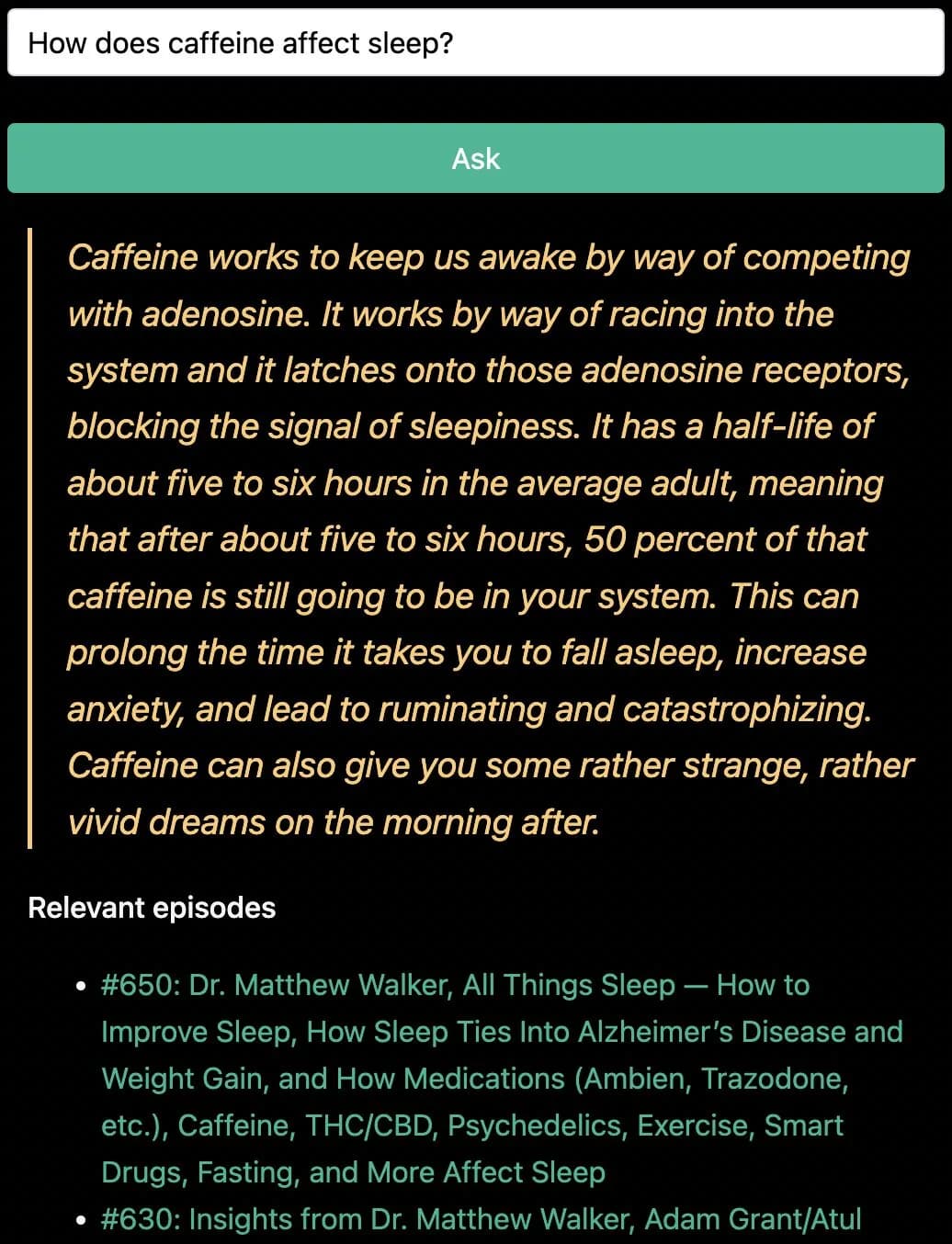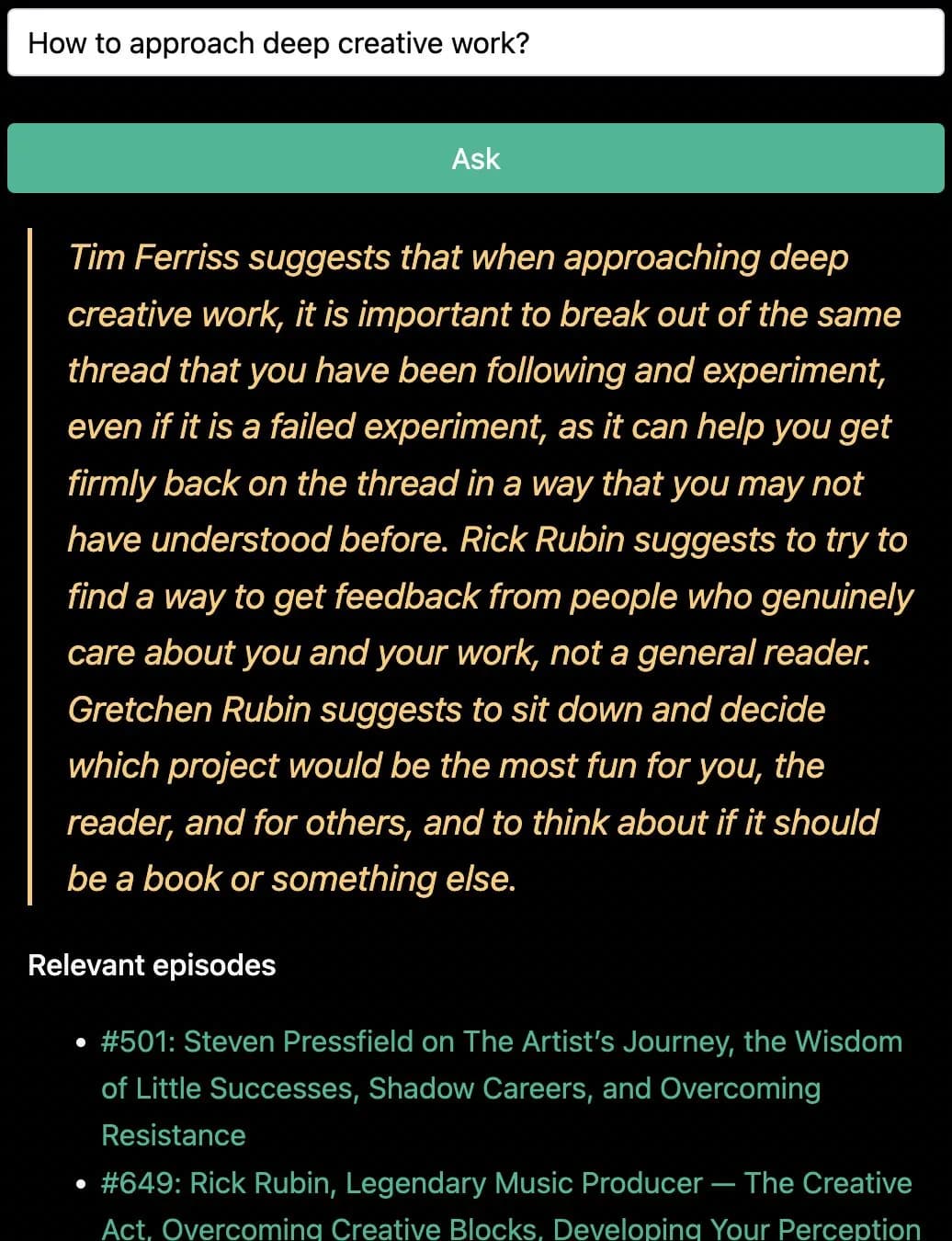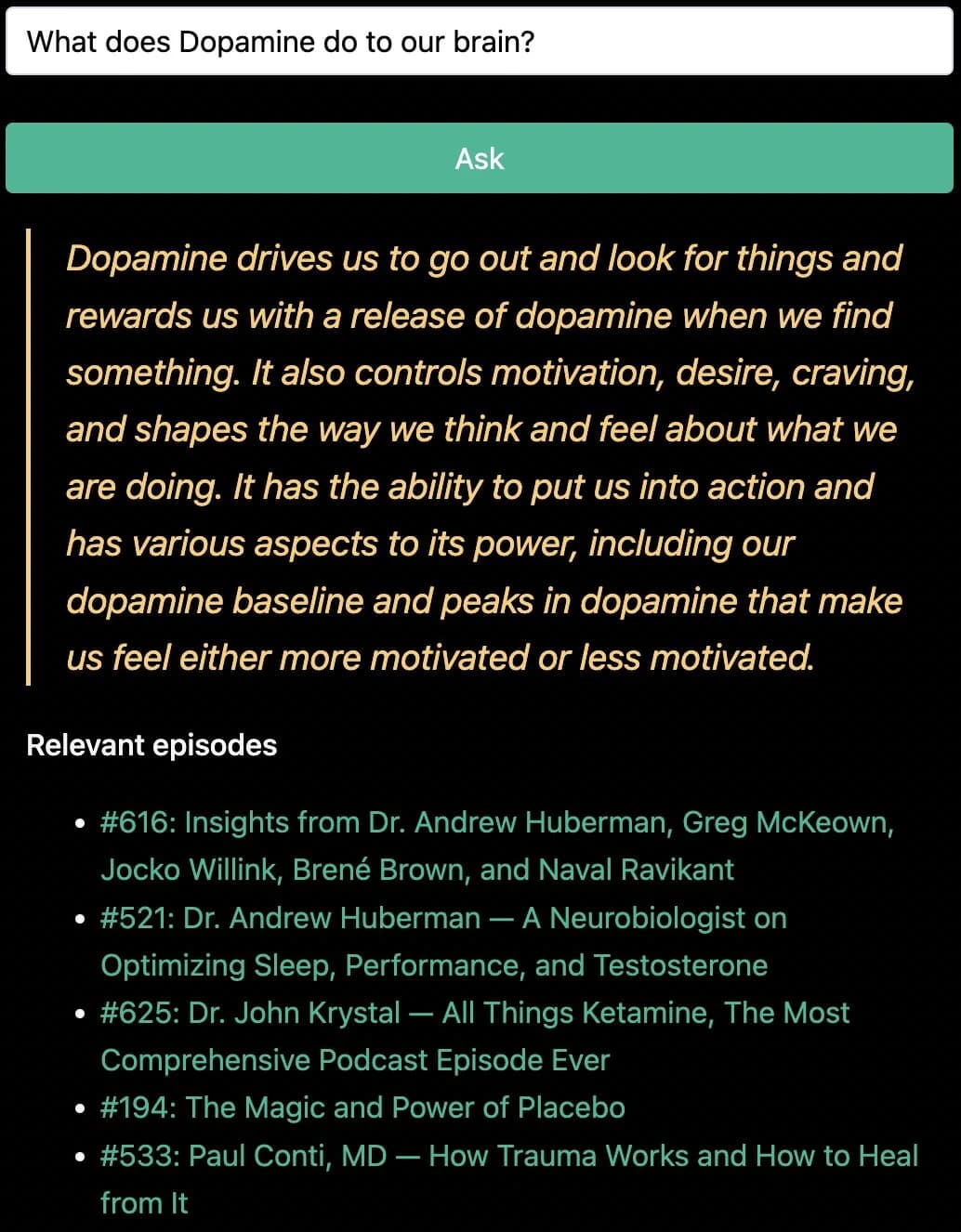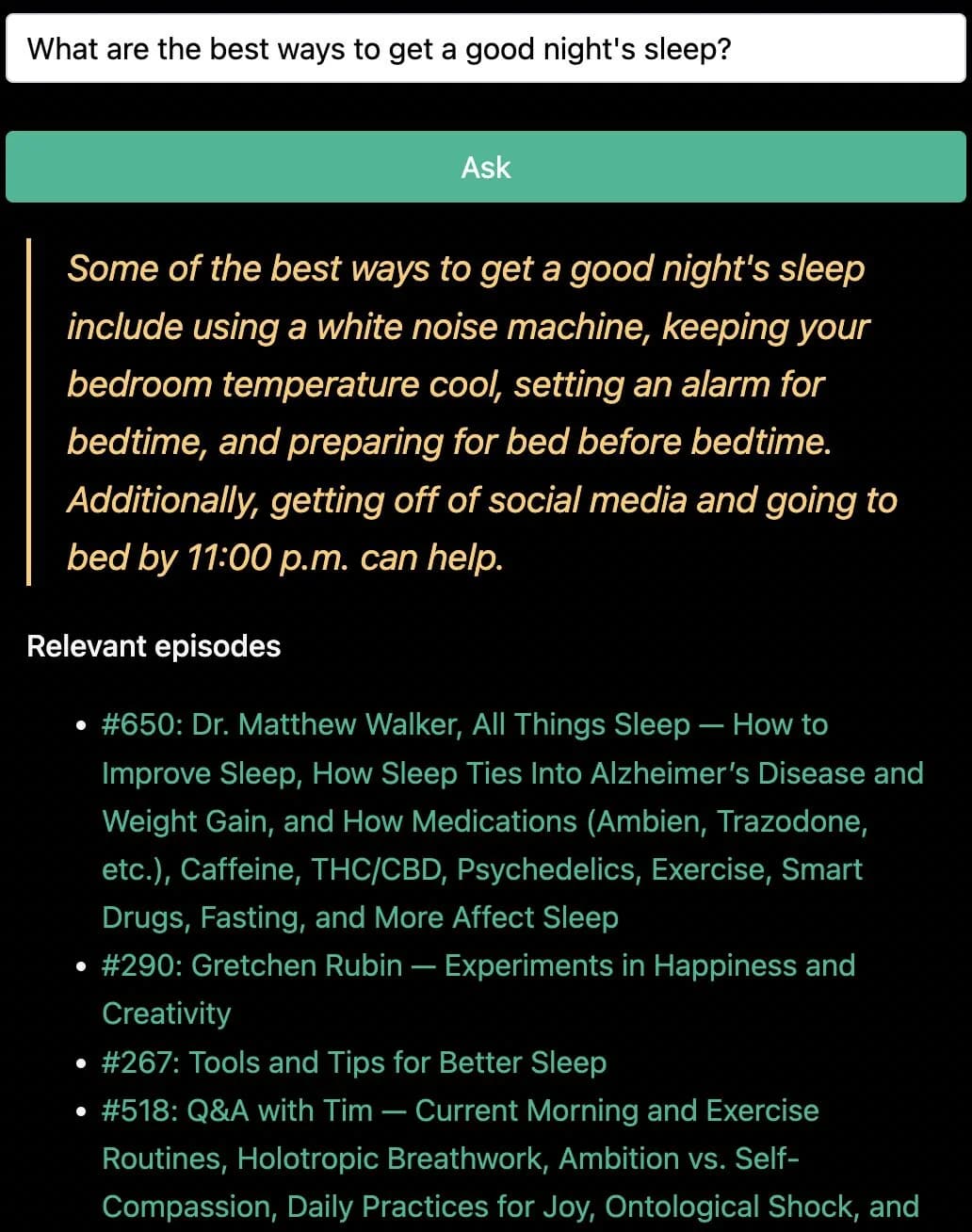As a way to examine what's possible with OpenAI's latest embeddings model called text-embedding-ada-002, I spent the weekend building a Tim Ferriss AI to answer questions addressed to him or any of his past guests.
We can use it to get human-like answers based on what was said in any episode.
The site uses a semantic search to find the chunks of text across all episodes that talk about what the question asks. Then it uses a GPT-3 model to generate a coherent answer.
See a few examples below on how it works:
 |
 |
 |
 |
 |
 |
When you pose a question, the following things happen:
- question text gets embedded
- that embedding gets matched to N closest embeddings across all transcript chunks
- the matched chunks get combined into a context string
- the context string and the question get combined into a prompt
- prompt is sent to another AI model to formulate into a coherent answer
- include a sorted-by-similarity list of episode links from all chunks (since all those episodes talk about what the question asked)
The loop above translates to the following code:
// question text gets embedded
const embedding = await getEmbedding(question);
// embedding gets matched to N closest embeddings across all transcript chunks
const trascriptChunks = await matchTranscriptChunks(question, embedding);
// matched chunks get combined into a context string
const context = combineChunksIntoContext(trascriptChunks);
// context string and the question get combined into a prompt
const prompt = buildPrompt(context, question);
// prompt is sent to another AI model to formulate into a coherent answer
const answer = await getAnswer(prompt);
// include a sorted-by-similarity list of episode links from all chunks
const sortedEpisodes = await getMatchedEpisodesSortedByRelevance(trascriptChunks);I crawled (most) of the episode transcripts, chunked them up into smaller segments of text roughly paragraph-size, and then used the embeddings model to embed each chunk into a 1536-dimensional vector.
The frontend is a Next.js app, the data is stored in Supabase, and the embeddings search is using pg-vector.